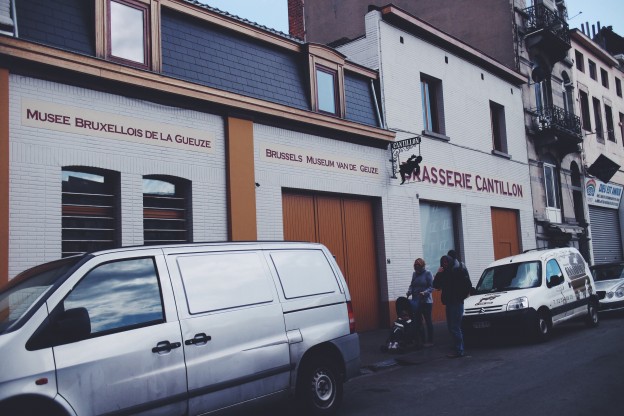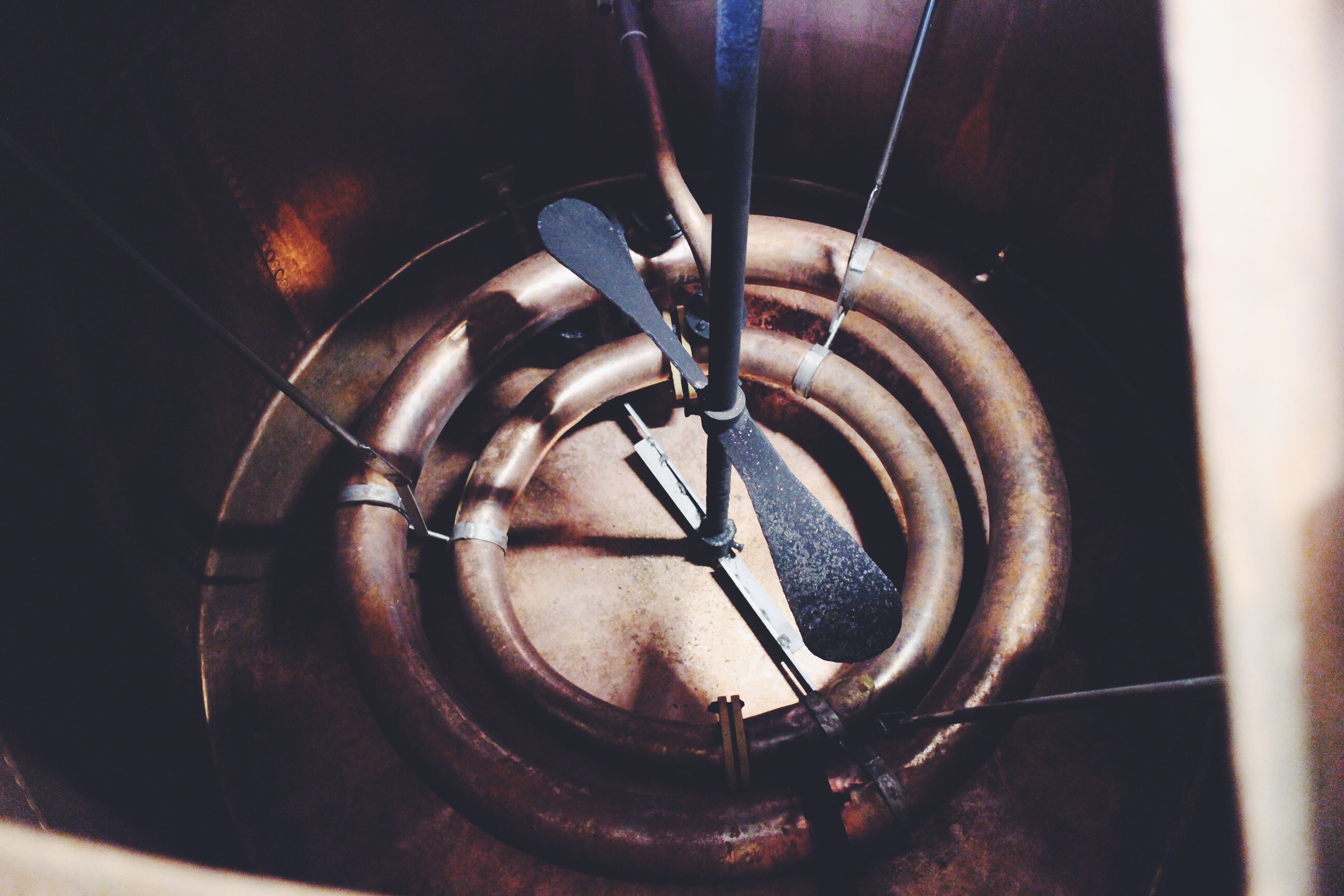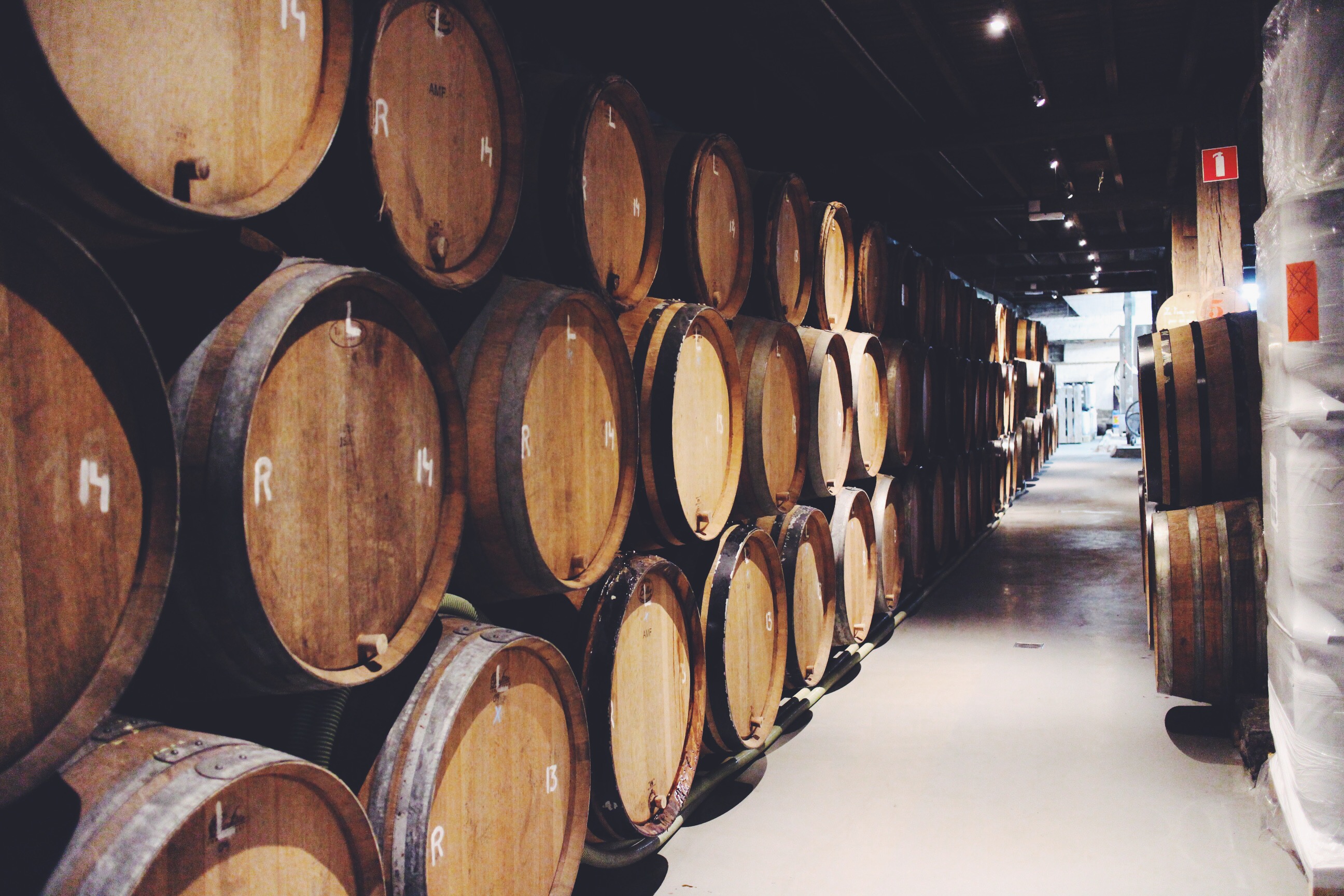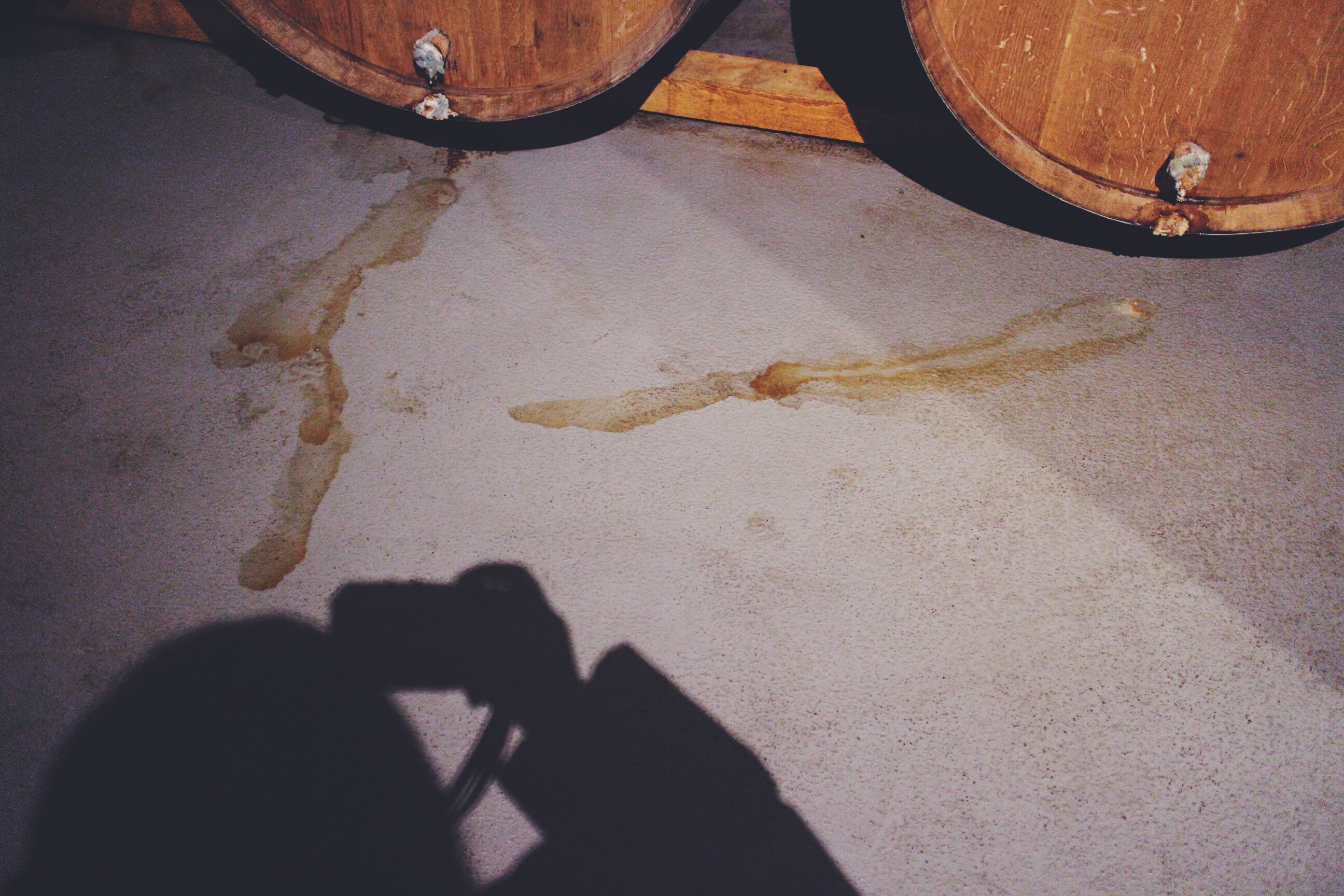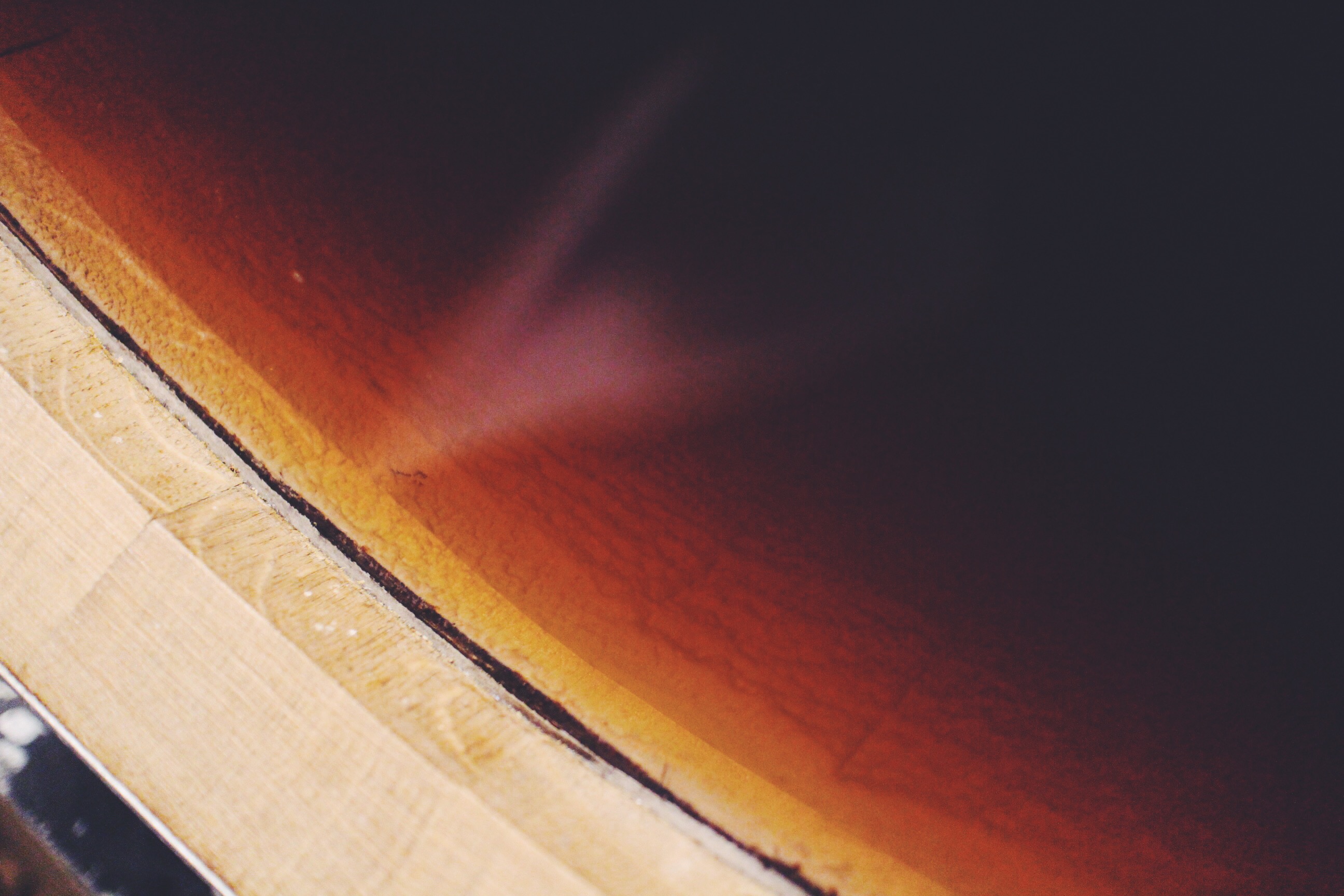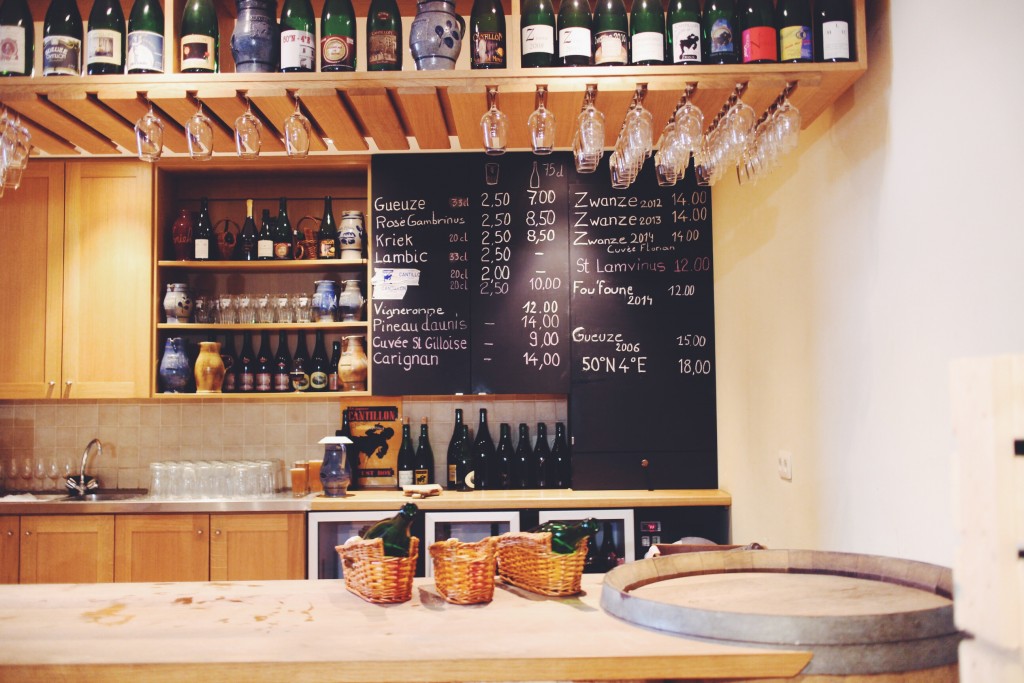For my 30th birthday, I was lucky enough to visit the Cantillon Brewery in Brussels. They’ve been my favourite brewery for a long time – I’m hooked on sours and they make the best out there.
I suppose they’ve had a long time to perfect the process as they’ve been brewing for over 100 years in their brewery, located within the city centre of Brussels (it’s just a 25 minute walk from that pissing kid Makan Piss statue). It’s in a residential neighbourhood, and once you get to their street, you wouldn’t recognise it if not for the painted sign above the door.
Step in, though, and the first thing that hits you is the smell – a damp, moist, vinegary pong that hits the nostrils hard. The place also looks like it hasn’t changed since the 19th century, with its stone floors and wooden beams holding the roof up. As you would expect, it’s a working brewery and they’re tight on space, so as soon as you get through the door, there are pallets of beer waiting to be delivered that must be navigated, and working men with pallet trucks to move out of the way for. It must be so difficult for the brewers to get any work done, as visitors like us were clueless and mostly in the way.

The brewery thankfully offers a self-guided tour for 7 euros (it includes two free taster portions of beer and a guide book), and numbers on the walls to take you through their beer making process.

So we began the tour, first by walking through a corridor where their beers hang out, waiting to be labelled and shipped. It might be testament of the trust they have in their visitors to not just hide some of the bottles and run away, though I’ve heard in the past that some people have actually done it, which is totally disgraceful. We can’t say we weren’t tempted though. The bottles were beautiful, and just there within reach.
But we move on instead to the mash tun, which is a huge vessel with an old-school mechanical paddle for mixing the grains. We took the staircase upstairs to see the boil kettle in yet another rickety room, then finally upstairs to the cool attic to see where the magic really happens. This is where the beer is naturally inoculated with wild yeast and bacteria spores, including their unique Brettanomyces Bruxellensis, which is named after the area the Cantillon brewery is in.
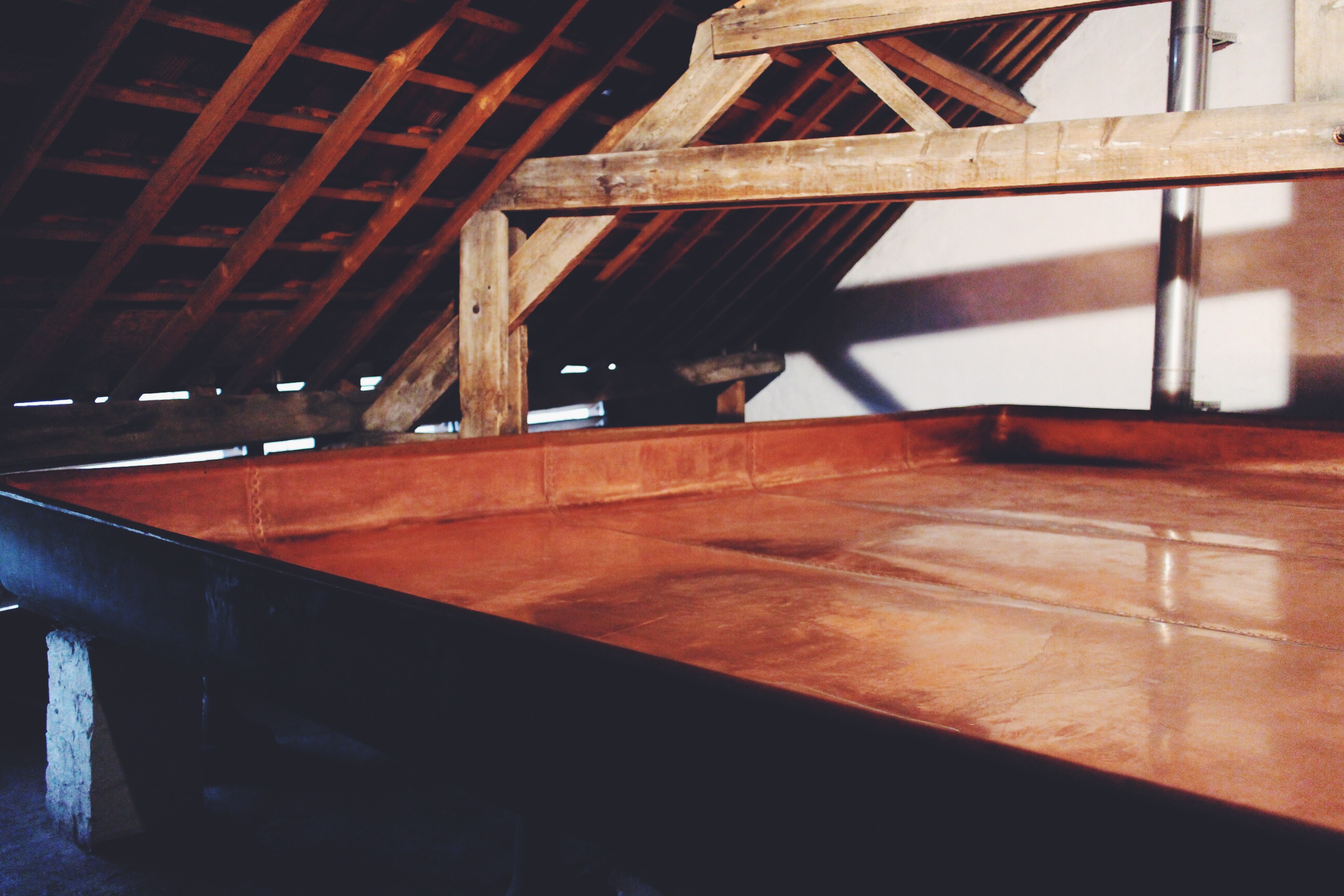
Here, the beer is pumped in warm, and cools down to below 40ºc where the good stuff starts to grow. It’s held here for sometime, and it is kept warm in the copper trough, which helps to speed up the growth. The window panes in the roof allow the bacteria and yeasts to drift in with the wind when they brew during Winter time. The room adjoining this fermentation tray is probably the most pungent of all the rooms – this one’s thick with the smell of stinky socks and sweaty men.

We continue next to the maturation halls, where the beer is put into oak barrels and left to ferment and mature for up to three years. The rest of the available space in the brewery is literally stacked with barrels with the sweet stuff ageing in them. Most of the barrels we got close to had beer foam and stains on them, pushed out from the active fermentation going on inside of the barrels. Check out the slideshow of the barrel room below.
From the barrel hall, we moved to the area where the fruits are pressed into puree, to be added to the barrels to make Cantillon’s famous Krieks and Framboise beers. They have some interesting looking old-school pressing devices here, which I don’t think are in use anymore, and we also noticed a vintage bottling machine in another corner of the room, which looked a little like a medieval torture device.


This marked the end of our tour, which went by pretty quickly as the brewery isn’t at all massive. It’s impressive that they’re resisted the urge to move to a bigger brewery to satisfy their growing army of fans, and have kept firm to the old traditions of brewing. They could have possibly achieve the same results using lambic cultures and stainless steel equipment like the new American sour breweries popping up, but have stuck to traditional techniques, which totally explains why they’re my favourite brewery.
We finally got to our favourite part of the tour – the tasting! It was filled with people and many bottles of expensive Cantillons. To start, we tasted a 16 month old lambic, which dispensed straight out of the barrel and a little flat. You could taste it had not had the time to fully develop as it was pretty one dimensional, but it was a good way to start and understand how blending plays a role in their beers. The next free beer we got to try was a Kriek, which had a nose of cherries and was very tart with a strong candy sugar finish.
Once we were done with the free tasters, we bought a Zwanze 2013 to taste, which for 2013, was produced as a joke to trick beer journalists that it was a big and bold Trippel style beer, which apparently worked. We poured it from the pretty lambic baskets holding the bottle, and it tasted like a Belgian pale ale with some subtle sour notes, and was quite refreshing. We met some friendly Americans from Denver, who shared some of their beers with us, and this way, we managed to taste everything on offer. The star of the show was the Zwanze 2012 – it was a complex beer that was seriously sour and tart with a dry finish.
When the tired brewery staff finally called for last orders, we took our last sips and tumbled out of Cantillon’s doors back into the cold Spring evening. I’m really, really glad I made the pilgrimage every craft beer drinker should do at some point in their lives. I hope you get the chance to do it some time too.
